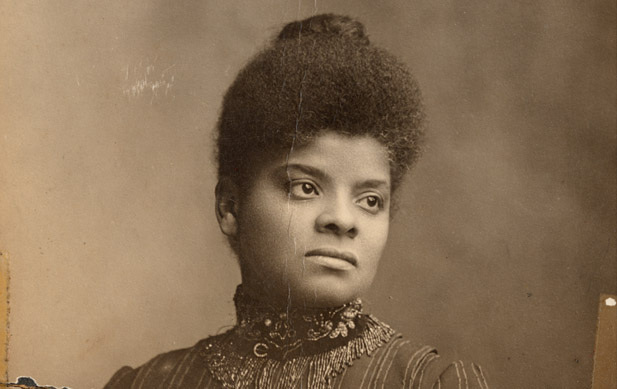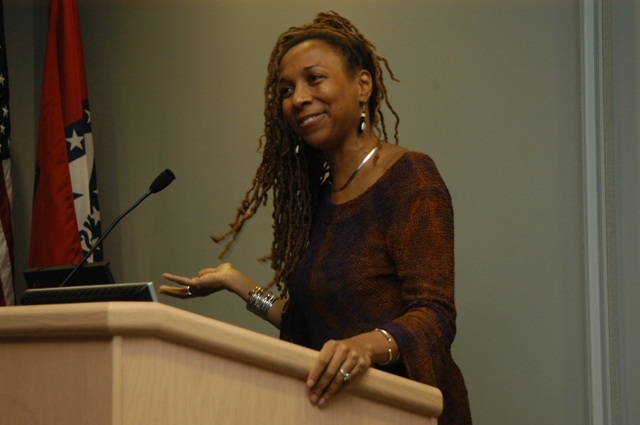Women of color: Contributions Throughout The Wave
fIRST-WAVE fEMINISM
African American women played in a large part of the first-wave of feminism, particularly with with the suffragette movement. “African American women participated in the woman suffrage movement from the antebellum period through to the passage of the Nineteenth Amendment. Legal status, class, region of residence, gender, and racial identification determined the degree to which black women could participate in the movement” (Terborg-Penn, 137). There were several components that kept African American women from participating and getting the right to vote though. Problems such as slavery, poverty, and the fact that many other suffragettes thought that black women should wait their turn. "Although ratified on February 3, 1870, the promise of the 15th Amendment would not be fully realized for almost a century. Through the use of poll taxes, literacy tests and other means, Southern states were able to effectively disenfranchise African Americans. It would take the passage of the Voting Rights Act of 1965 before the majority of African Americans in the South were registered to vote" (Library of Congress).
Ida B. Wells: Biography
IMPORTANT TEXTS
Rosalyn Terborg-Penn - African American Women in the Struggle for the Vote, 1850-1920 (Available at the USF Tampa Library)
|
tHIRD-wAVE FEMINISM
Much of the third-wave feminism is taking the various ideas that women of color had in earlier movements and building upon them, being more inclusive of people and their various intersectionalities, and the views of marginalized groups around the world. It is during this time that we have an upsurge on texts about intersectionality, standpoint theory, and the matrix of domination. "Collin's matrix of domination can be applied to conceptualize difference along a range of interlocking inequalities of race, class, and gender. These socially constructed factors inflect each other, and it is only through collectively examining the intricate connections between them that we can fully understand a given individual's life experience" ( Brooks et al., 19).
Kimberlé Crenshaw
IMPORTANT TEXTS
Patricia Hill Collins - Black Feminist Thought: Knowledge, Consciousness, and the Politics of Empowerment
Kimberlé Crenshaw - Demarginalizing the Intersection of Race and Sex: A Black Feminist Critique of Antidiscrimination Doctrine, Feminist Theory and Antiracist Politics Kimberlé Crenshaw - Intersectionality, Identity Politics, and Violence Against Women of Color |
sECOND-wAVE FEMINISM
The second-wave of feminism was an extremely important time for many women of color feminists and many of the writings laid the groundwork for current feminist thought. Movements such as the black feminist movement, Chicana movement, and other women of color were making themselves much more known to what was considered mainstream feminism at the time. It is during this time that we see a monumental text come out entitled This Bridge Called my Back by women of color feminist such as Cherríe Moraga, Gloria E. Anzaldúa, Audre Lorde, the Combahee River Collective, Barbara and Beverly Smith, etc. " The women in whose hands This Bridge Called My Back was wrought identify as Third World women and/or women of color. Each woman considers herself a feminist, but draws her feminism from the culture in which she grew" (Moraga, XXIV). It is also during this time that the very important text, Borderlands by Gloria Anzaldúa, come out in 1987. This book explores not only her life as a Chicana, a lesbian, and an activist, but also speaks about the border of America and Mexico and her ties to both.
IMPORTANT TEXTS
|
Black Feminism / womanism
The definition for Black Feminism and Womanism is difficult to say because of the variety of interpretations that black women have given to both titles. Womanism first appeared in Alice Walker's "In Search of our Mothers' Gardens" which was published in 1983. In this book she gives four different definitions for what the word means. "According to Walker's first definition, a "womanist" was "a black feminist or feminist of color" (xi)" (Collins, 10). This shows how for some women, the two terms are interchangeable with each other, but this is not always the case with all women.
IMPORTANT TEXTS
Patricia Hill Collins
|
Reference
Brooks, Abigail, and Sharlene Nagy Hesse-Biber. "An Invitation to Feminist Research." Trans. Array Feminist Research Practice. Thousand Oaks: Sage Publications, 2007. 1-26. Print.
Collins, Patricia Hill. "What's in a Name? Womanism, Black Feminism, and Beyond." 9-17. Print. <http://www.cj-resources.com/CJ_Female Offenders_pdfs/whats in a name women black feminism and beyond - Collins 1996.pdf>.
Ida. B Wells. N.d. Photograph. Biography, Chicago. Web. 28 Apr 2013. <http://www.biography.com/imported/images/Biography/Images/Galleries/Ida B. Wells/ida-b-wells-2-sized.jpg>.
Moraga, Cherrie, and Gloria Anzaldua. This Bridge Called My Back. 2nd Ed. New York: Kitchen Table-Women of Color Press, 1984. XXIII-XXVI. Print.
Patricia Hill Collins. N.d. Photograph. Public SociologiesWeb. 89 Apr 2013. <http://www2.asanet.org/convention/2004/featsesslist.html>.
"Primary Documents in American History." 15th Amendment to the Constitution: Primary Documents of American History (Virtual Programs & Services, Library of Congress). N.p., n.d. Web. 27 Apr. 2013.
Terborg-Penn, Rosalyn. "African American Women and the Woman Suffrage Movement." Trans. Array African American Women in the Struggle for the Vote, 1850-1920. Indiana University Press, 1998. 134-155. Print.
Collins, Patricia Hill. "What's in a Name? Womanism, Black Feminism, and Beyond." 9-17. Print. <http://www.cj-resources.com/CJ_Female Offenders_pdfs/whats in a name women black feminism and beyond - Collins 1996.pdf>.
Ida. B Wells. N.d. Photograph. Biography, Chicago. Web. 28 Apr 2013. <http://www.biography.com/imported/images/Biography/Images/Galleries/Ida B. Wells/ida-b-wells-2-sized.jpg>.
Moraga, Cherrie, and Gloria Anzaldua. This Bridge Called My Back. 2nd Ed. New York: Kitchen Table-Women of Color Press, 1984. XXIII-XXVI. Print.
Patricia Hill Collins. N.d. Photograph. Public SociologiesWeb. 89 Apr 2013. <http://www2.asanet.org/convention/2004/featsesslist.html>.
"Primary Documents in American History." 15th Amendment to the Constitution: Primary Documents of American History (Virtual Programs & Services, Library of Congress). N.p., n.d. Web. 27 Apr. 2013.
Terborg-Penn, Rosalyn. "African American Women and the Woman Suffrage Movement." Trans. Array African American Women in the Struggle for the Vote, 1850-1920. Indiana University Press, 1998. 134-155. Print.



